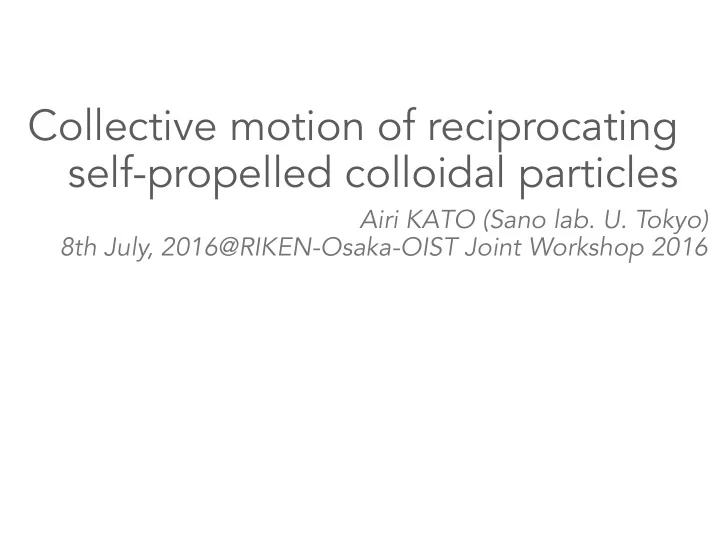

Collective motion of reciprocating self-propelled colloidal particles Airi KATO (Sano lab. U. Tokyo) 8th July, 2016@RIKEN-Osaka-OIST Joint Workshop 2016
H. Wioland et al, Phys. Rev. Lett. 110 268102 (2013). 1/15 Deseigne, et al. Phys. Rev. Lett.105, 098001 (2010). Self-propelled particle: motivation fish school bird flock Bacterial suspension Vibrated disks
ITO coated slides double-sided tapes 30μm Electric field a few mm of droplet microscope high speed camera suspension: colloidal particles ( polystyrene, Φ5μm) + AOT / hexadecane 0.15 mol/l 2/15 Experimental Setup: colloidal particles rolling on a electrode How is the mechanism of propulsion?
3/15 https://de.wikipedia.org/wiki/Georg_Hermann_Quincke Original paper: G. Quincke, Ann. Phys. Chem. 59, 417-486 (1896). N. Pannacci et al., Phys. Rev. Lett. 99, 094503(2007). Rolling mechanism: the Quincke effect Charge relaxation time =(dielectric constant)/(conductivity) stable unstable G. Quincke (dielectric) Electric torque surpass the viscous torque in start to rotate! induced by the surface charge (instantaneous) steady stable sol.: steady rotation (electric torque) (viscous torque)
4/15 Properties of Quincke rollers ➤ relax in 1ms and then constant speed uniformly ramdom in 2D plane ⚠ NOT electrophoresis. Always external field ⊥ propelling direction ✓ easy preparation - typical speed: ✓ easy to control propulsion speed - cf. speed of bacteria ✓ relaxation time to steady state is small
➤ Other slides are deleted (unpulblished).
Recommend
More recommend